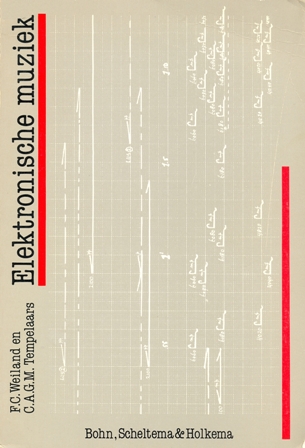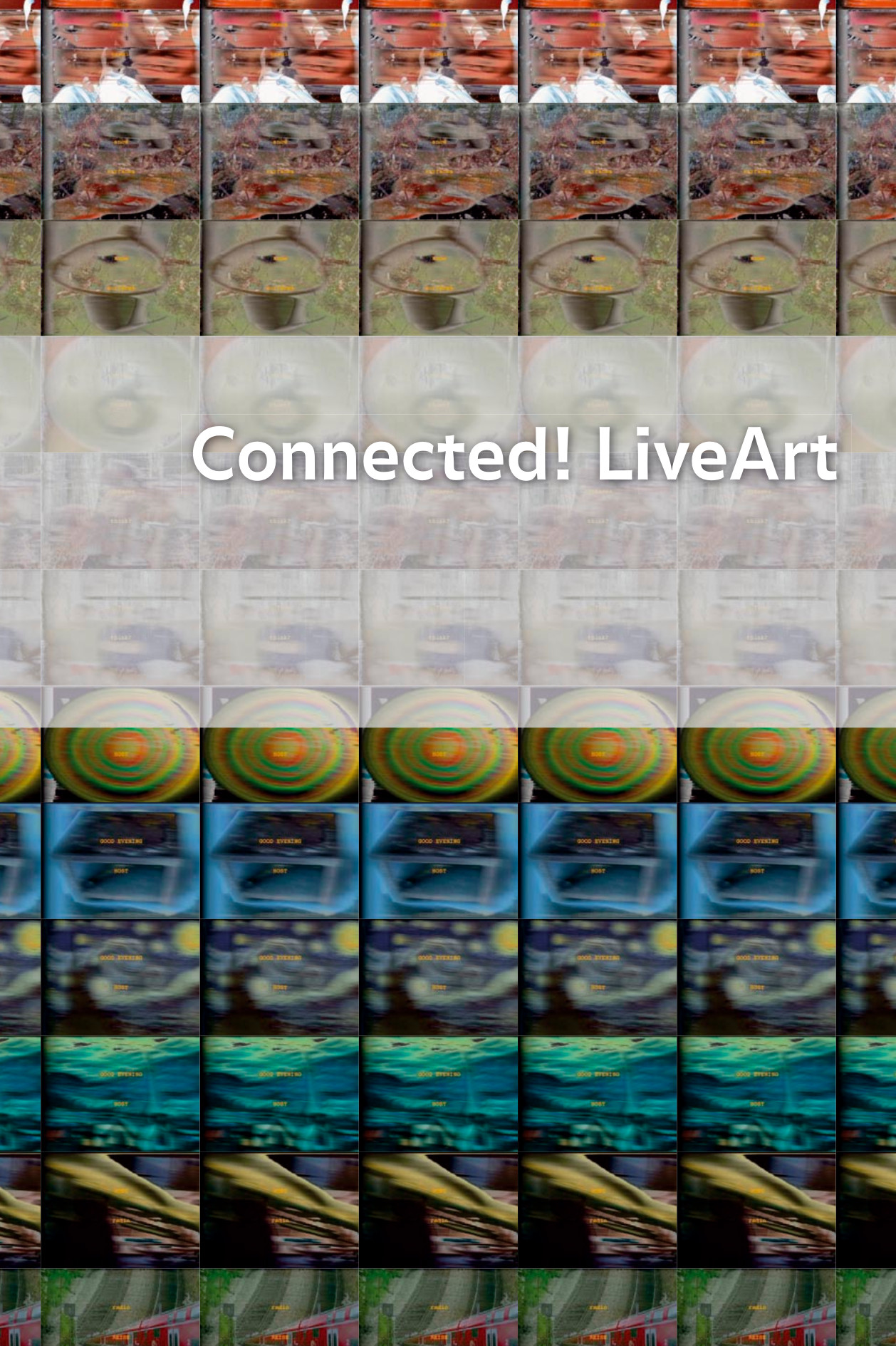F. C. Weiland: Elektronische Muziek. Muzikale en historische aspecten (1982/2008) [Dutch]
Filed under book | Tags: · electroacoustic music, electronic music, music, music history, netherlands, radio art

“Het boek Elektronische muziek werd in 1981/82 geschreven door F. C. Weiland en C.A.G.M. Tempelaars op verzoek van de uitgeverij Bohn, Scheltema en Holkema. Beide auteurs doceerden aan het Instituut voor Sonologie van de Rijksuniversiteit Utrecht, maar het boek was gericht op de belangstellende en professionele buitenwereld in het Nederlandse taalgebied. Het eerste deel, van Frits Weiland, beschrijft de muzikale en historische aspecten van de elektronische muziek, met bijzondere aandacht voor de Nederlandse situatie. Het tweede deel, van Stan Tempelaars, behandelt de signaaltheoretische aspecten. Het boek was destijds uitverkocht en niet herdrukt, en is dus al lange tijd niet meer verkrijgbaar.
Inmiddels heeft de elektronische muziek een grote ontwikkeling doorgemaakt, en is er hernieuwde belangstelling voor de geschiedenis van dit genre. Frits Weiland en NEAR/MCN wilden daarom deze historische tekst in digitale vorm toegankelijk maken. Hiermee wordt deze geschiedenis van de Nederlandse elektronische muziek voor een nieuwe generatie ontsloten. Wij hopen dat dit als inspiratie kan dienen voor nieuwe historische overzichten en verschillende interpretaties van oude en nieuwe Nederlandse elektro-akoestische muziek.
Voor deze digitale versie is zoveel mogelijk de oorspronkelijke tekst van het boek aangehouden; bij de tekstopmaak zijn kleine veranderingen aangebracht, met een nieuwe paginering. Deze tekst wordt ter inzage aangeboden; het is niet toegestaan om deze te vermenigvuldigen of in andere vormen openbaar te maken.
Voor citaten en verwijzingen moet de oorspronkelijke uitgave van Bohn, Scheltema en Holkema gebruikt worden (ISBN 90 313 0531 6); deze is te raadplegen bij Muziek Centrum Nederland (Amsterdam) of bij (universiteits-)bibliotheken.”
Originally published by Bohn, Scheltema & Holkema, Utrecht/Antwerpen, 1982
Publisher Muziek Centrum Nederland, Amsterdam, 2008
120 pages
PDF (13 MB, updated on 2016-12-23)
Comment (0)Sher Doruff, Nancy Mauro-Flude (eds.): Connected: LiveArt (2005)
Filed under catalogue | Tags: · art, collaboration, installation art, media art, network art, networks, radio art, sound art, streaming, telepresence

“The Connected! Programme spanned a two year period from January 2003 to January 2005. It officially concluded with a celebratory Birthday party for Art in the Theatrum Anatomicum of Waag Society, the local ‘home’-base of many Connected! projects. Although most of the people present at that event agreed with Federico Bonelli’s assessment “that art could have committed suicide in 1984″ – the research and the show goes on.
The Connected! Programme had four nested components: Projects, Artists-in-Residence, Sentient Creatures Lecture Series and Anatomic. This book documents many of the activities in these domains; the lectures, the events, the workshops, the performances, the installations, the discourse. Yet, it’s interesting to note that pulling together material for this publication was a bit like trying to capture the wind. Much of the work produced in this two-year period emphasized the real-time process of the making. Documentation of that often fragile, unstable and always already ephemeral process is sketchy at best and marginal to the actualization of the event itself. For many of these artists, documentation is a secondary concern, an afterthought. For others, documenting is an integral process indistinguishable from the event itself.
There are myriad photos in this catalogue of artists behind their laptops. Myriad photos that say little about the levels and layers of codified communication emitted from those unseen screens. These casual, unpretentious shots are images of social networks in progress – the translocal – a feedback loop of the local effecting the global affecting the local affecting the global. Not only does the artwork produced, or better transduced, scramble representational meaning but so too does the process of making. Performance practice that addresses the indeterminate dance-on-the-edge-of-chaos in compositional processes is a felt thing, an experience that doesn’t always translate well in laptop snapshots.”
Co-writers: Federico Bonelli, Beth Coleman, Josephine Dorado, Lucas Evers, Wander Eikelboom, Howard Goldkrand, Jan-Kees van Kampen, Arjen Keesmaat, Jeff Mann, Mark Meadows, Hellen Sky, Michelle Teran, Ananya Vajpeyi
Publisher Waag Society, Amsterdam, September 2005
Creative Commons BY-SA 2.0 Netherlands License
160 pages
PDF (updated on 2012-9-3)
Comment (0)Adalaide Kirby Morris (ed.): Sound States: Innovative Poetics and Acoustical Technologies (1997)
Filed under book | Tags: · acoustics, art, listening, literature, music, performance, radio, radio art, sound art, sound recording, technology

By investigating the relationship between acoustical technologies and twentieth-century experimental poetics, this collection, with an accompanying compact disc, aims to ‘turn up the volume’ on printed works and rethink the way we read, hear, and talk about literary texts composed after telephones, phonographs, radios, loudspeakers, microphones, and tape recorders became facts of everyday life.
The collection’s twelve essays focus on earplay in texts by James Joyce, Ezra Pound, H.D., Samuel Beckett, William Burroughs, Amiri Baraka, Bob Kaufman, Robert Duncan, and Kamau Brathwaite and in performances by John Cage, Caribbean DJ-poets, and Cecil Taylor. From the early twentieth-century soundscapes of Futurist and Dadaist ‘sonosphers’ to Henri Chopin’s electroacoustical audio-poämes, the authors argue, these states of sound make bold but wavering statements–statements held only partially in check by meaning. The accompanying CD offers soundtracks of early radio sounds, poetry readings, Dada cabaret performances, jazzoetry, audiopoems, and contemporary Caribbean DJ dub poetry.
The contributors are Loretta Collins, James A. Connor, Michael Davidson, N. Katherine Hayles, Nathaniel Mackey, Steve McCaffery, Alec McHoul, Toby Miller, Adalaide Morris, Fred Moten, Marjorie Perloff, Jed Rasula, and Garrett Stewart.
Publisher University of North Carolina Press, 1997
ISBN 0807846708, 9780807846704
349 pages
PDF (no OCR; updated on 2012-8-3)
Comment (0)
